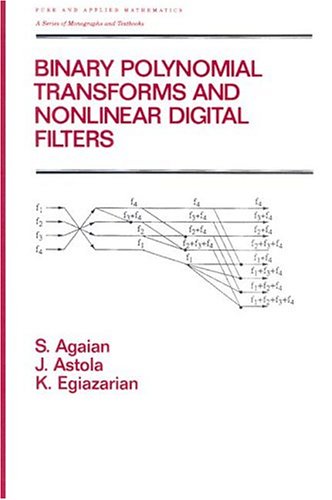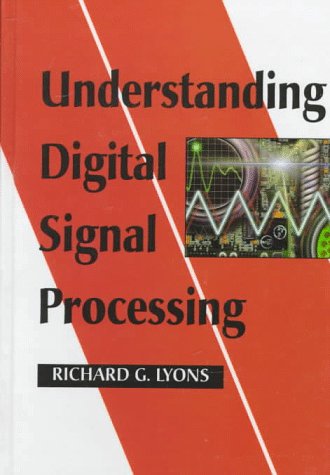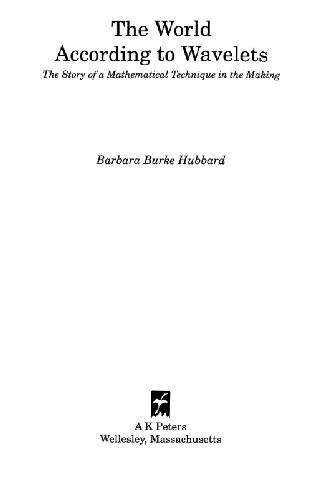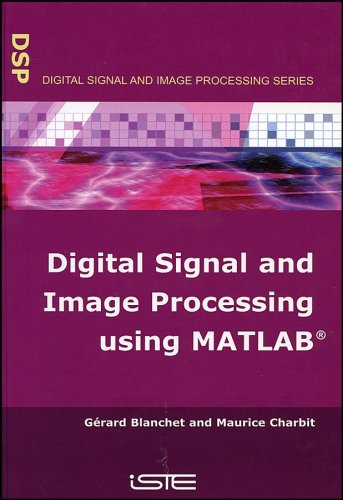Steven Smith9780750674447, 0-75067444-X
Table of contents :
Cover……Page 1
Half Title Page……Page 2
Title Page……Page 4
Copyright……Page 5
Contents at A Glance……Page 6
Table of Contents……Page 7
Preface……Page 13
The Roots of DSP……Page 16
Telecommunications……Page 19
Audio Processing……Page 20
Echo Location……Page 22
Image Processing……Page 24
Signal and Graph Terminology……Page 26
Mean and Standard Deviation……Page 28
Signal vs. Underlying Process……Page 32
The Histogram, Pmf and Pdf……Page 34
The Normal Distribution……Page 41
Digital Noise Generation……Page 44
Precision and Accuracy……Page 47
Quantization……Page 50
The Sampling Theorem……Page 54
Digital-to-Analog Conversion……Page 59
Analog Filters for Data Conversion……Page 63
Selecting the Antialias Filter……Page 70
Multirate Data Conversion……Page 73
Single-Bit Data Conversion……Page 75
Computer Numbers……Page 82
Fixed Point (Integers)……Page 83
Floating Point (Real Numbers)……Page 85
Number Precision……Page 87
Execution Speed: Program Language……Page 91
Execution Speed: Hardware……Page 95
Execution Speed: Programming Tips……Page 100
Signals and Systems……Page 102
Requirements for Linearity……Page 104
Static Linearity and Sinusoidal Fidelity……Page 107
Examples of Linear and Nonlinear Systems……Page 109
Special Properties of Linearity……Page 111
Superposition: The Foundation of DSP……Page 113
Common Decompositions……Page 115
Alternatives to Linearity……Page 119
The Delta Function and Impulse Response……Page 122
Convolution……Page 123
The Input Side Algorithm……Page 127
The Output Side Algorithm……Page 131
The Sum of Weighted Inputs……Page 137
Common Impulse Responses……Page 138
Mathematical Properties……Page 147
Correlation……Page 151
Speed……Page 155
The Family of Fourier Transform……Page 156
Notation and Format of the Real DFT……Page 161
The Frequency Domain’s Independent Variable……Page 163
DFT Basis Functions……Page 165
Synthesis, Calculating the Inverse DFT……Page 167
Analysis, Calculating the DFT……Page 172
Polar Notation……Page 176
Polar Nuisances……Page 179
Spectral Analysis of Signals……Page 184
Frequency Response of Systems……Page 192
Convolution via the Frequency Domain……Page 195
Linearity of the Fourier Transform……Page 200
Characteristics of the Phase……Page 203
Periodic Nature of the DFT……Page 209
Compression and Expansion, Multirate Methods……Page 215
Multiplying Signals (Amplitude Modulation)……Page 219
The Discrete Time Fourier Transform……Page 221
Parseval’s Relation……Page 223
Delta Function Pairs……Page 224
The Sinc Function……Page 227
Other Transform Pairs……Page 230
Gibbs Effect……Page 233
Harmonics……Page 235
Chirp Signals……Page 237
Real DFT Using the Complex DFT……Page 240
How the FFT Works……Page 243
FFT Programs……Page 248
Speed and Precision Comparisons……Page 252
Further Speed Increases……Page 253
The Delta Function……Page 258
Convolution……Page 261
The Fourier Transform……Page 267
The Fourier Series……Page 270
Filter Basics……Page 276
How Information Is Represented in Signals……Page 280
Time Domain Parameters……Page 281
Frequency Domain Parameters……Page 283
High-Pass, Band-Pass and Band-Reject Filters……Page 286
Filter Classification……Page 289
Implementation by ConvoIution……Page 292
Noise Reduction vs. Step Response……Page 293
Relatives of the Moving Average Filter……Page 295
Recursive Implementation……Page 297
Strategy of the Windowed-Sinc……Page 300
Designing the Filter……Page 303
Examples of Windowed-Sinc Filters……Page 307
Pushing It to the Limit……Page 308
Arbitrary Frequency Response……Page 312
Deconvolution……Page 315
Optimal Filters……Page 322
The Overlap-Add Method……Page 326
FFT Convolution……Page 327
Speed Improvements……Page 331
The Recursive Method……Page 334
Single Pole Recursive Filters……Page 337
Narrow-Band Filters……Page 341
Phase Response……Page 343
Using Integers……Page 347
The Chebyshev and Butterworth Responses……Page 348
Designing the Filter……Page 349
Step Response Overshoot……Page 353
Stability……Page 354
Match #1: Analog vs. Digital Filters……Page 358
Match #2: Windowed-Sinc vs. Chebyshev……Page 361
Match #3: Moving Average vs. Single Pole……Page 363
Human Hearing……Page 366
Timbre……Page 370
Sound Quality vs. Data Rate……Page 373
High Fidelity Audio……Page 374
Companding……Page 377
Speech Synthesis and Recognition……Page 379
Nonlinear Audio Processing……Page 383
Digital Image Structure……Page 388
Cameras and Eyes……Page 391
Television Video Signals……Page 399
Other Image Acquisition and Display……Page 401
Brightness and Contrast Adjustments……Page 402
Grayscale Transforms……Page 405
Warping……Page 409
Convolution……Page 412
3×3 Edge Modification……Page 417
Convolution by Separability……Page 419
Example of A Large PSF: Illumination Flattening……Page 422
Fourier Image Analysis……Page 425
FFT Convolution……Page 431
A Closer Look at Image Convolution……Page 433
Spatial Resolution……Page 438
Sample Spacing and Sampling Aperture……Page 445
Signal-to-Noise Ratio……Page 447
Morphological Image Processing……Page 451
Computed Tomography……Page 457
Target Detection……Page 466
Neural Network Architecture……Page 473
Why Does It Work?……Page 478
Training the Neural Network……Page 480
Evaluating the ResuIts……Page 488
Recursive Filter Design……Page 491
Data Compression Strategies……Page 496
Run-Length Encoding……Page 498
Huffman Encoding……Page 499
Delta Encoding……Page 501
LZW Compression……Page 503
JPEG (Transform Compression)……Page 509
MPEG……Page 516
How DSPs Are Different from Other Microprocessors……Page 518
Circular Buffering……Page 521
Architecture of the Digital Signal Processor……Page 524
Fixed versus Floating Point……Page 529
C versus Assembly……Page 535
How Fast Are DSPs?……Page 541
The Digital Signal Processor Market……Page 546
The ADSP-2106x Family……Page 550
The SHARC EZ-KIT Lite……Page 552
Design Example: An FIR Audio Filter……Page 553
Analog Measurements on A DSP System……Page 557
Another Look at Fixed versus Floating Point……Page 559
Advanced Software Tools……Page 561
The Complex Number System……Page 566
Polar Notation……Page 570
Using Complex Numbers by Substitution……Page 572
Complex Representation of Sinusoids……Page 574
Complex Representation of Systems……Page 576
Electrical Circuit Analysis……Page 578
The Real DFT……Page 582
Mathematical Equivalence……Page 584
The Complex DFT……Page 585
The Family of Fourier Transforms……Page 590
Why the Complex Fourier Transform Is Used……Page 592
The Nature of the s-Domain……Page 596
Strategy of the Laplace Transform……Page 603
Analysis of Electric Circuits……Page 607
The Importance of Poles and Zeros……Page 612
Filter Design in the s-Domain……Page 615
The Nature of the z-Domain……Page 620
Analysis of Recursive Systems……Page 625
Cascade and Parallel Stages……Page 631
Spectral Inversion……Page 634
Gain Changes……Page 636
Chebyshev-Butterworth FiIter Design……Page 638
The Best and Worst of DSP……Page 645
Glossary……Page 646
Index……Page 658
Back Cover……Page 666







Reviews
There are no reviews yet.